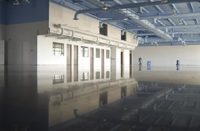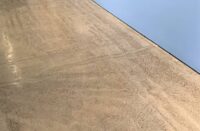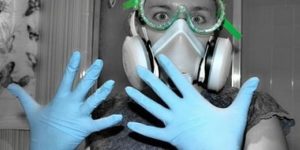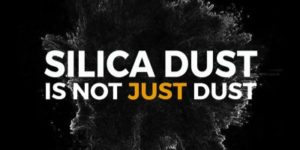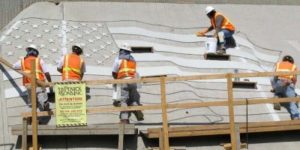
Asbestos is a class of minerals valued because of its strength, flexibility and fire resistance. These minerals are made up of thin fibrous crystals that are made of millions of smaller microscopic fibers called fibrils. Asbestos has been mined for about 4,000 years but became common in the late 1800s, with widespread use continuing through the late 1980s. While asbestos was used in many different materials for a variety of reasons, the area that affects the decorative concrete industry is its use in floor tiles and mastic or glue for floor tiles.
There’s no way to tell if tiles or mastic contain asbestos just by looking at a floor. Some characteristics give clues. However, to be safe, you should text any vinyl tile and tile mastic installed before 1990 prior to removal.
What makes asbestos so dangerous is that when the materials are disturbed, those microscopic fibers are released into the air. When breathed into lungs, these fibers can’t be expelled or dissolved so they build up very quickly. They not only can cause several types of cancer but they also can limit the amount of air one can breathe.
The EPA and OSHA
The Environmental Protection Agency and OSHA have approved processes called asbestos abatement. This process aims to remove tile, glue or mastic that has greater than 1 percent asbestos identified through testing. Since the usable life cycle for floors installed from 1970 until 1990 has passed, more and more remodeling projects are involving owners who are finally having to abate.
When the brand standard is polished concrete, this causes confusion and issues at the time of construction. In this article, I intend to clarify what to expect and give you a plan of action for what needs to be done after abatement to provide an acceptable floor finish.
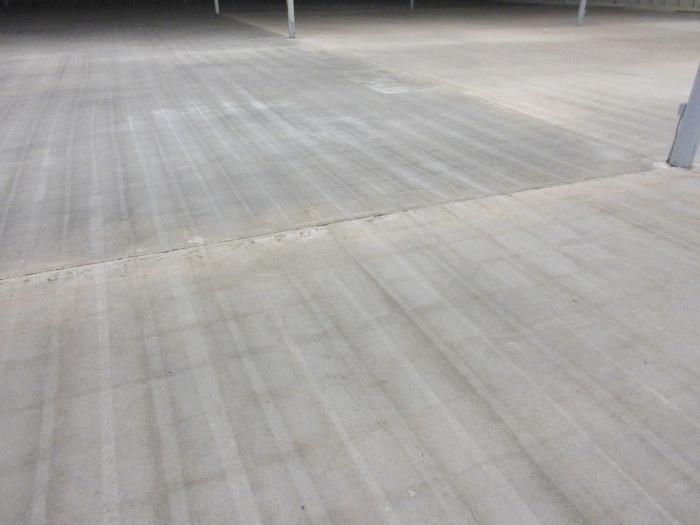
Asbestos in the tile only
Polished concrete contractors should never try to grind floors that contain asbestos. Abatement contractors are specialized. They must totally and methodically encapsulate an area so none of the contaminated dust or fibers leak out.
When the tile alone contains asbestos, it can be removed without destroying the concrete underneath. However, be aware that floors where the tile alone is removed tend to have a much greater chance of ghosting patterns being visible in the surface. I see this result in about 20 percent of the floors that must be abated.
These floors are fine to polish using standard polishing processes, as long as your customer is aware that the VAT (Vinyl Asbestos Tile) pattern will be visible in the surface paste of the polished concrete. Dying the floor won’t hide this pattern. In fact, it tends to exaggerate the ghosting.
Asbestos in tile and glue
Most of the floors that have asbestos tile also have asbestos glue or mastic. When this situation occurs, the glue, including what’s embedded into the pores of the concrete and any cracks, must be 100 percent removed during the abatement process.
The most common resulting finish after abatement looks like the floor has been shot blasted. The top 1/16 to 1/4 inch of the concrete is entirely removed to ensure that all asbestos containing material is gone from the site.
As a polisher, this type of abatement is harder to deal with. First, you must explain to your customer that the resulting finish will be exposed aggregate. There is no way to use the existing slab and not expose the aggregate after the paste cap has been removed. This will also affect the color of the floor.
Different areas of the country have different color aggregate in the concrete — typically white, gray, tan, brown, dark brown or black aggregates. As these are exposed, they’ll determine the overall color. You can dye the floor, but the rocks are typically too dense to accept color. However, the cement surrounding the rocks will take color just fine.
This situation requires large samples to be completed to show the overall look of the aggregate with the selected dye color. I recommend a minimum of 250 square feet per sample area.
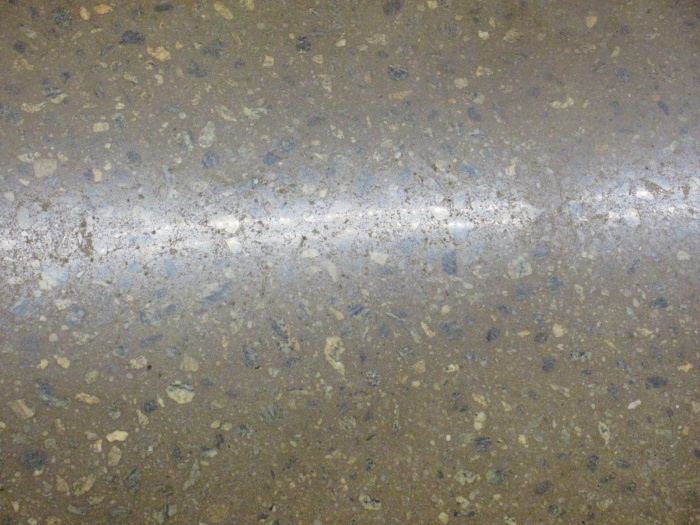
Fill the voids
All areas with exposed aggregate need to be grout coated. During the process of mixing and placing concrete, the aggregates trap air in small bubbles. When you expose these aggregates, you expose these small air voids, too. They are typically the size of the tip of a ball point pen, but there will be thousands of them.
If these holes aren’t filled, they’ll lower the overall gloss of the polished concrete finish and trap dirt and grime for the remainder of that floor’s life. After you place your sample, you should select a grout color that is a close match to the concrete or the concrete after dye. This way, when you grout the floor and grind off all the material remaining at the surface, the filled voids will match the overall look of the floor.
Up your comfort level
Polishing floors that have been abated is not something to be afraid of. Abatement contractors are required to have the floor tested after they complete their work. This testing ensures that all asbestos-containing materials have been removed. You can polish the concrete if you have a good idea what to expect.
Over the next five years, more and more floors will need abating. This is a result of the age of the buildings. Additionally, it is because of the durability of the flooring material installed 30-40 years ago. It is also a result of legislation that requires abatement.
Some manufacturers are developing systems to aid with projects involving asbestos removal. One that comes to mind is Skudo. This is a floor protection manufacturer that developed a mat system to encapsulate asbestos floors. Thus, it allows the user to install a cementitious overlay without affecting the dangerous substrate.
With the knowledge you’ve gained from this article, I hope you’ll feel comfortable providing quality polished concrete floors where asbestos abatement has occurred.
Note: We are not a licensed medical journal. If you have concerns about your health related to asbestos, please contact your primary care provider.
